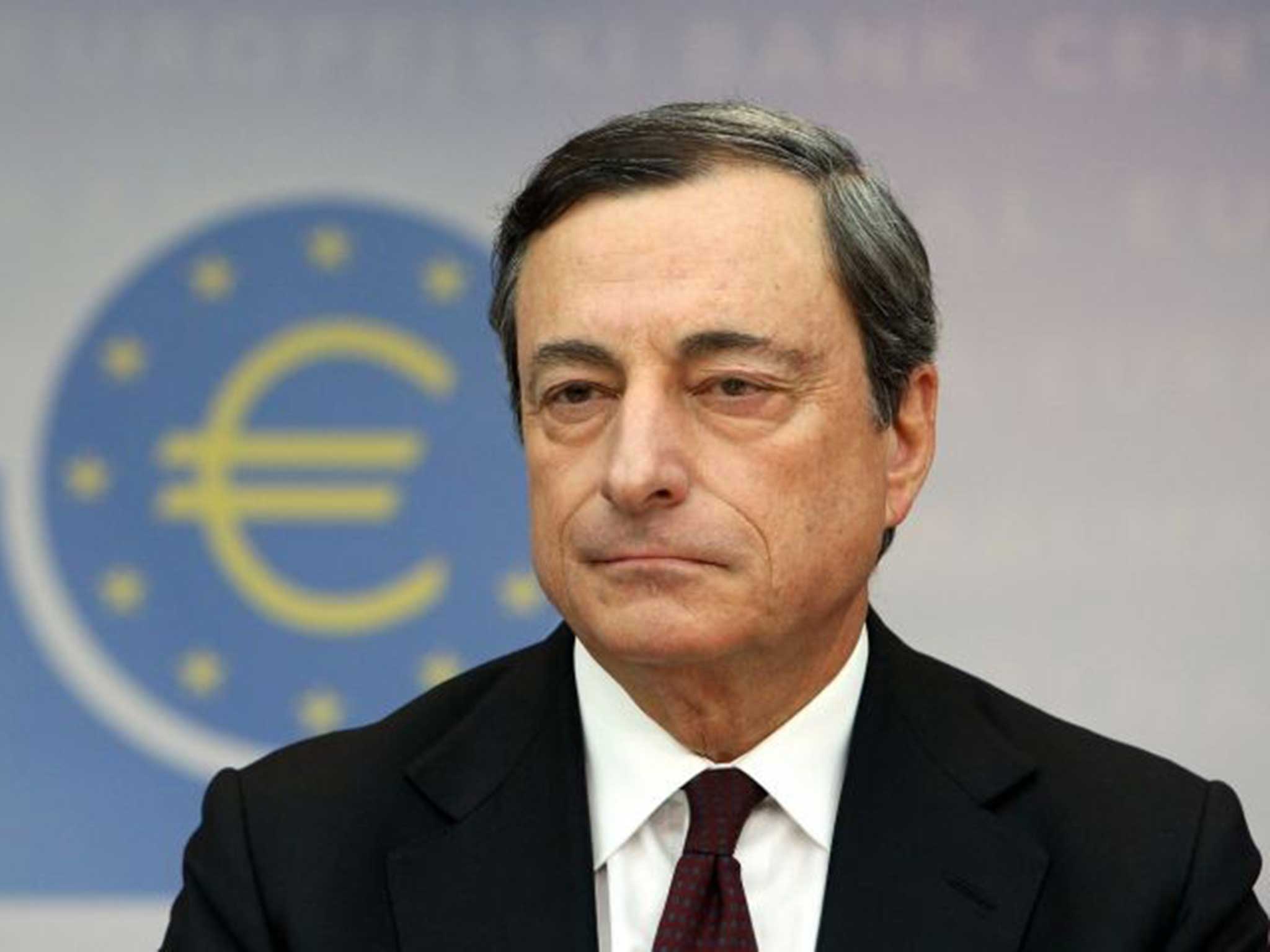Eurozone flames were doused, but those coals still smoulder
When the crisis was tackled by the ECB two years ago it merely bought time that has not been used well

It has been two years since the eurozone crisis dominated newspaper front pages and the television news. A promise by Mario Draghi, the president of the European Central Bank (ECB), to do "whatever it takes" to stop the single currency area from breaking apart in the summer of 2012 dowsed the flames of panic in financial markets. But it would be a grave mistake to conclude that the crisis is over. Although the immediate conflagration was extinguished by Mr Draghi, the coals continued to glow dangerously hot.
The economic situation in the eurozone has, in fact, been deteriorating quite rapidly in recent months. The bloc emerged from recession in the middle of last year. But growth has been terribly weak and was flat in the three months to June. The 18-member bloc's output is still 2.7 per cent below its peak back in 2008. In the United States, output is now 7 per cent higher than it was six years ago. Eurozone unemployment has fallen from its 12 per cent peak but remains dreadfully high at 11.5 per cent. Contrast that with the 6.4 per cent unemployment rate in Britain and 6.2 per cent in the US.
Yet the most serious threat facing the eurozone is not weak growth nor high unemployment, awful as they are, but inflation. Or, to be precise, the lack of inflation. Annual growth in consumer prices across the eurozone collapsed to 0.3 per cent in August, well below the ECB's inflation target of just under 2 per cent.
While low inflation is a short-term benefit for shoppers, for countries with high national debt it is poisonous. It makes the annual repayments harder to service and exerts huge strain on public finances. Furthermore, it encourages people to delay purchases. This depresses GDP growth, which pushes up both government deficits and unemployment. Outright deflation – falling prices – is worse still.
The debt threat is the most salient. The eurozone's net national debt to GDP ratio at 73 per cent is not high relative to that of the US, which has a debt pile worth 81 per cent of annual output. But the fiscal balance sheets of particular states are much worse. Italy's debt is 110 per cent of GDP. In Ireland it is 100 per cent. Greece is labouring under a 170 per cent burden. And those nations, not the eurozone as a whole, are responsible for servicing the debts. They need strong growth and reasonable inflation to cope.
For the past year the ECB has been forecasting that eurozone price growth would pick up, only for it to keep falling. Has the euro cent finally dropped? Analysts now expect the central bank to announce an emergency programme of sovereign bond purchases before the end of the year, following a path already trodden by the central banks in the US, Japan and the UK. The goal would be to boost the supply of money in the single currency and to prevent deflation taking hold.
But how effective would it be? Empirical research by the Bank of England on its so-called Quantitative Easing suggests that, while helpful, it was not economically transformative. Moreover, in Europe there remain powerful fiscal forces pulling down growth and prices which monetary stimulus would need to overcome.
Ever since the crisis began four years ago, Europe's policymakers have insisted the Continent needs structural economic reforms to prosper in the long term. That's unquestionably true. Economies such as those of Italy, France, Portugal, Spain and Greece have chokingly restrictive labour markets. They haemorrhaged competitiveness in the boom years of the past decade. Wages ran ahead of productivity while trade deficits spiralled.
There has been some structural reform in those economies in recent years. Yet those reforms have sucked demand or spending power out of the economy. And this effect has been exacerbated by public spending cuts and tax increases mandated by the authorities in Brussels, who have been alarmed by rising public debt. It is this austerity that has hammered growth, while also provoking unprecedented popular resentment towards Europe in countries on the periphery.
Stimulus from the ECB on prices, while welcome, would not be enough to put Europe on a sustainable recovery path. What the eurozone also needs is an easing of public-sector austerity in reforming states and a boost to demand from the dominant and super-competitive economy of Germany. Yet though monetary stimulus might be arriving, there is no sign of progress on the fiscal front. Berlin remains as hostile to domestic reflation as ever.
It is now clear that the easing of the market panic after Mr Draghi's 2012 promise induced a fateful complacency. Europe's leaders squandered the time and space brought by that intervention. And now, as result, they find themselves fighting fires once again.
Hamish McRae is away
Join our commenting forum
Join thought-provoking conversations, follow other Independent readers and see their replies
Comments
Bookmark popover
Removed from bookmarks